Eggshell paint dry time refers to the period it takes paint coating to go from wet to hard and rigid finish.
Water-based eggshell paint takes around 2 hours to dry between coats and 12-24 hours to cure. Oil-based eggshell paint takes around 4 hours to dry between coats and 24-48 hours to cure.
For paint to dry, the solvent (water or oil) must evaporate and the coating must become hard or rigid.
How Long Does Eggshell Paint Take to Dry Between Coats?
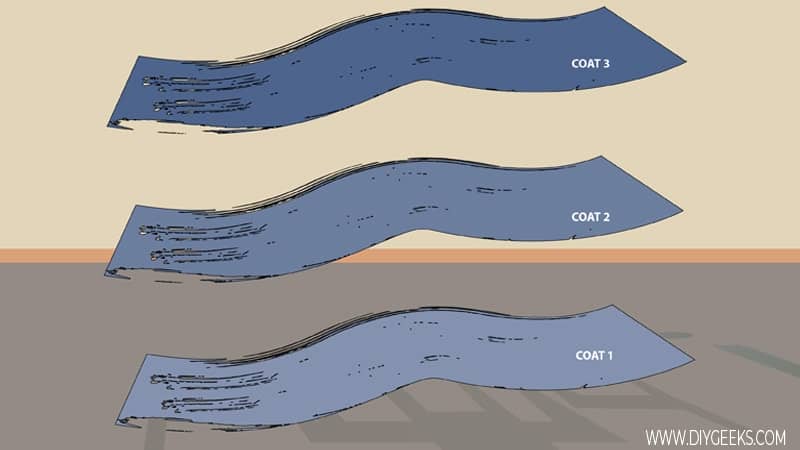
Water-based eggshell paint takes around 2 hours to dry between coats, while oil-based eggshell paint takes around 4 hours.
For eggshell paint to dry, its solvent (water or oil) must evaporate and the coating must become hard (rigid).
Water-based eggshell paint dries faster since water evaporates faster from the coating. Oil-based eggshell dries slower because its solvent (oil) evaporates slower from the coating and the paint is formulated with extra sheen (gloss) and additives.
If you re-coat the paint finish too soon, the finish will remain wet for longer, turn sticky or tacky, or peel off. If the paint is still wet and you paint over it, the new paint coating will prevent the old paint coating solvent from evaporating, this increases the dry time and creates a sticky finish.
To know if the paint is dry enough for a re-coat, inspect the finish. The paint is dry enough for a re-coat If the finish looks dry and rigid. If the paint has a wet or moist appearance, the finish isn’t dry yet.
How Long Does Eggshell Paint Take to Cure?
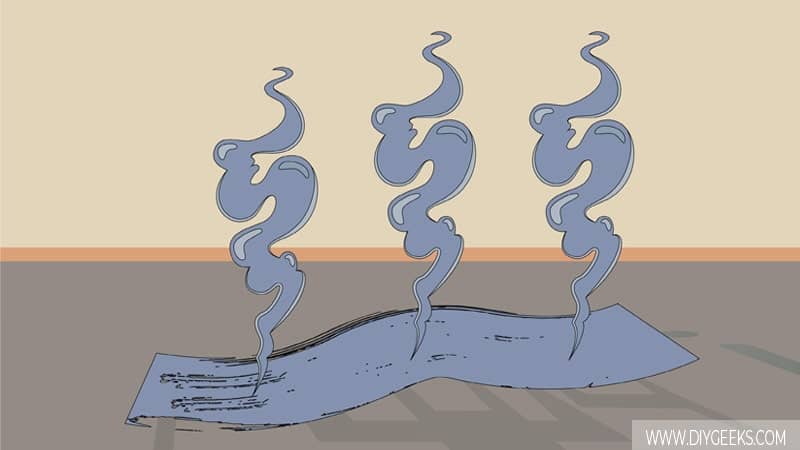
Water-based eggshell paint takes between 12-24 hours to cure, while oil-based eggshell paint takes between 24-48 hours.
The paint reaches its maximum durability, strength, and adhesion when it dries. Once the paint cures, you can clean or use it. If you clean or use eggshell paint before it cures, the finish will get damaged, cracked, or removed.
Eggshell paint will have a dry textured colorful finish with low reflection when dry. Since eggshell paint doesn’t have a lot of sheen (or gloss), the paint produces a textured finish.
You must wait until the paint cures before sealing it. If you seal eggshell paint before it cures, the paint will remain wet for longer, turn sticky, and may peel off.
How To Make Eggshell Paint Dry Faster?
To make eggshell paint dry faster, do the following things.
- Increase the Solvent Evaporation Rate.
- Thin the Paint Before Applying.
- Use a Dehumidifier.
1. Increase the Solvent Evaporation Rate
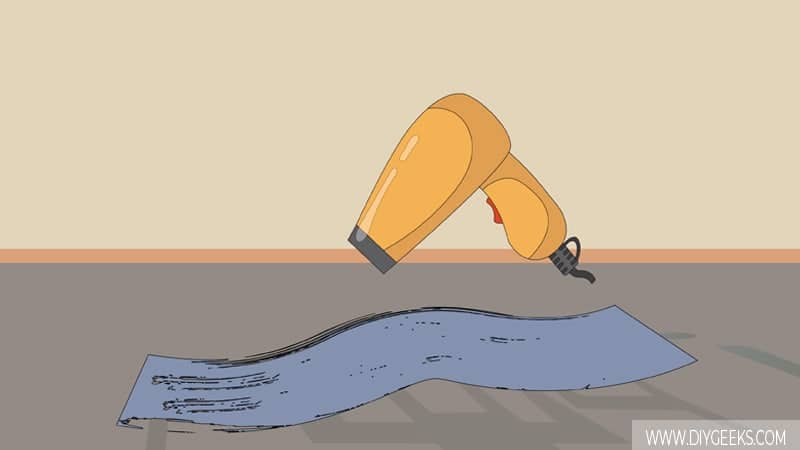
Since eggshell paint dries through solvent evaporation, increasing (or speeding up) the evaporation rate speeds up its drying time. To increase the evaporation rate, increase the heat around the paint coating and improve the airflow.
To improve the solvent evaporation rate, do the following things.
- Use a hairdryer at a medium temperature.
- Move the hairdryer around the eggshell paint coating (for 5 minutes).
- Wait 30 minutes.
- Re-use the hairdryer for 5 minutes.
- Allow the paint to dry naturally.
You shouldn’t dry the eggshell paint completely with a hairdryer. Doing this will make the paint dry too quickly, and this can cause the paint to crack and fall off.
2. Thin the Paint Before Applying
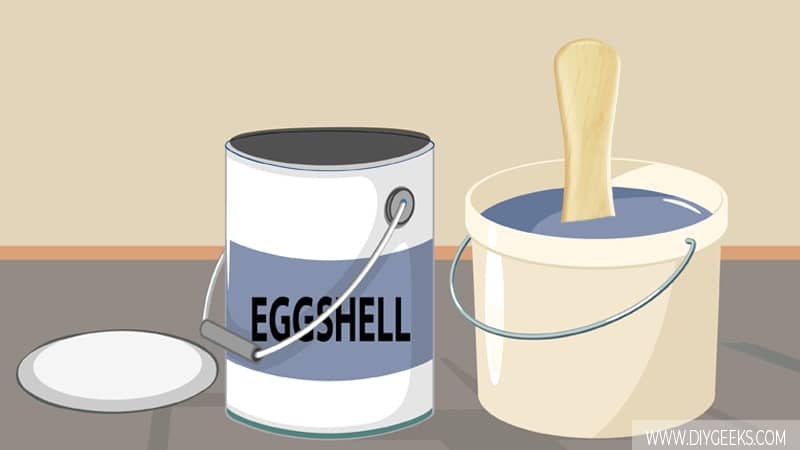
Thinner eggshell paint coatings will dry faster than thicker coatings because there are fewer solvents and additives to evaporate. To make eggshell paint dry faster, thin it before application.
To thin water-based eggshell paint, use water. To thin oil-based eggshell paint, use mineral spirits. Use a thinning ratio of 4:1 (4 parts paint to 1 part thinner).
To thin eggshell paint, do the following things.
- Pour eggshell paint into a clean paint bucket.
- Add the paint thinner in a ratio of 4:1 (4 parts paint to 1 part thinner).
- Mix the paint and the thinner.
- Apply the thinned paint.
Don’t over-thin the paint, as it can cause the paint to lose its viscosity and color.
3. Use a Dehumidifier
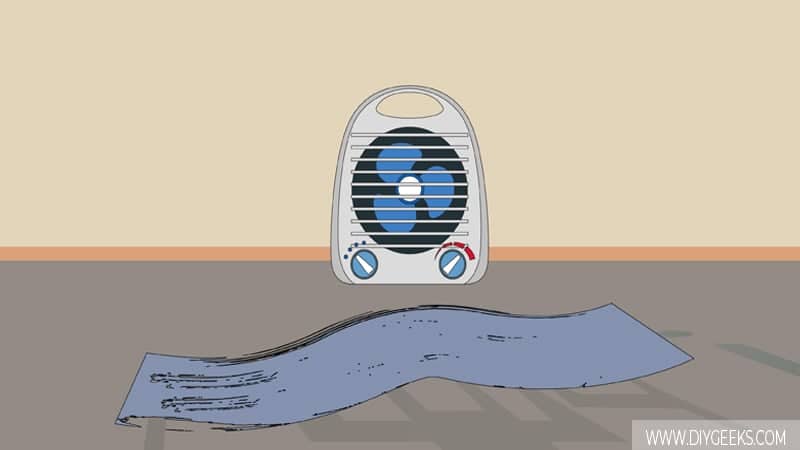
Eggshell paint takes longer to dry and cure if the humidity levels are higher than 50%. To decrease the humidity levels, use a dehumidifier. The dehumidifier will suck the moist air and replace it with dry air.
Here’s a guide to this:
- Open all windows and vents.
- Turn on the dehumidifier.
- Set the dehumidifier at 45%.
- Leave the dehumidifier to work until the paint dries.
Indoor vs Outdoor Dry Time
Eggshell paint dries faster outdoors than indoors during summer, and faster indoors than outdoors during winter. Since the paint dried through evaporation, the room temperature and humidity levels can affect the drying time.
Eggshell paint will dry faster if the temperature is higher than 50°F (10°C) and humidity levels lower than 50%. The paint will take two times longer to dry if the temperature is lower than 50°F (10°C) and humidity levels lower than 50%.
Outdoor weather elements during summer or hot days will increase the solvent evaporation rate and make the paint dry faster. However, outdoor weather elements during winter, such as rain or snow, will increase the humidity levels and decrease the solvent evaporation rate, slowing down the paint drying time.
Why Isn’t Eggshell Paint Drying?
Eggshell paint isn’t drying for the following reasons.
- Filthy Surface: The eggshell paint will take longer to dry if the surface is filthy as it can’t adhere properly and will remain wet for longer.
- Too Many Coats: If you add too many coats, the paint will take longer to dry as there are more solvents and additives to evaporate. For instance, if you apply too much oil-based eggshell paint, it takes longer for the solvent (oil) to evaporate.
- Wet Surface: If the surface is wet, eggshell paint will take longer to dry as the surface moisture keeps the paint wet longer and prevents the paint from adhering or drying properly.
- Re-coated Too Soon: If you re-coat too soon, the existing coating solvent will be trapped between two coats and will evaporate slower.


